Photos taken by Dominique Ziehl (Smith College), Student Correspondent for CET Brazil, Fall 2023
July 27
On our first day in Brazil for Fall 2023, only a few lucky students made it to Guarulhos International Airport on time. The others were left scrambling through delays, missed connections, and lengthy visa processing. Other than one zoom session together before arriving in Brazil, no one knew who anyone else was or exactly what they looked like. We didn’t even know our CET representatives were who were picking us up. Luckily, we were somehow able to spot the dazed and confused faces through the sea of arrivals and huddle near a café for pickup.
We drove almost an hour into central São Paulo and moved into our apartments, meeting our Brazilian roommates. They attend the nearby college, PUC-SP (Pontifícia Universidade Católica de São Paulo), where some of us will enroll.
The same night, we met up with CET’s leaders and those of our study abroad classmates and flatmates who could make it for pizza night at the CET administrative building.
After eating and cleaning up, we all learned how to get back to our apartments from the CET center. We reenacted the famous Beatles album cover on Wanderlei Street (Rua Wanderlei). Don’t worry; it was a dead-end street!
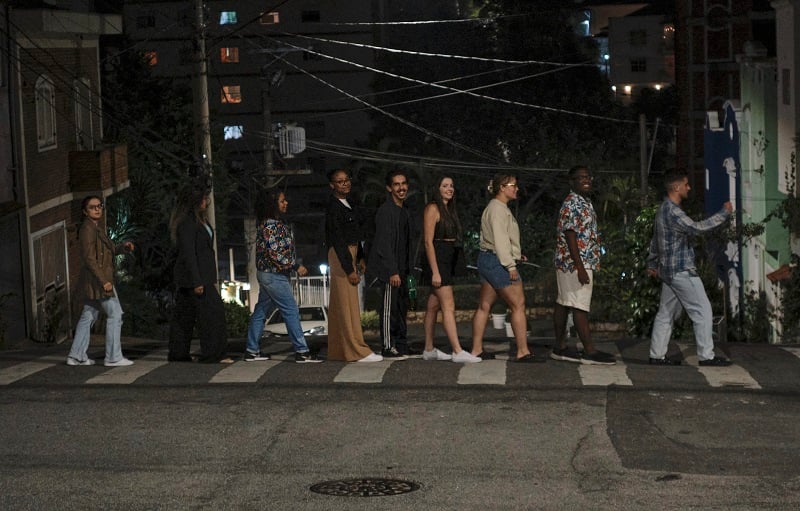
July 28
On the second day, our CET cohort walked up the hill to PUC-SP. Some of us will enroll in one fully Portuguese course, while others will take up to two courses. We toured the campus and met a few of the native and exchange students of PUC, who will also help us integrate socially with the other students.
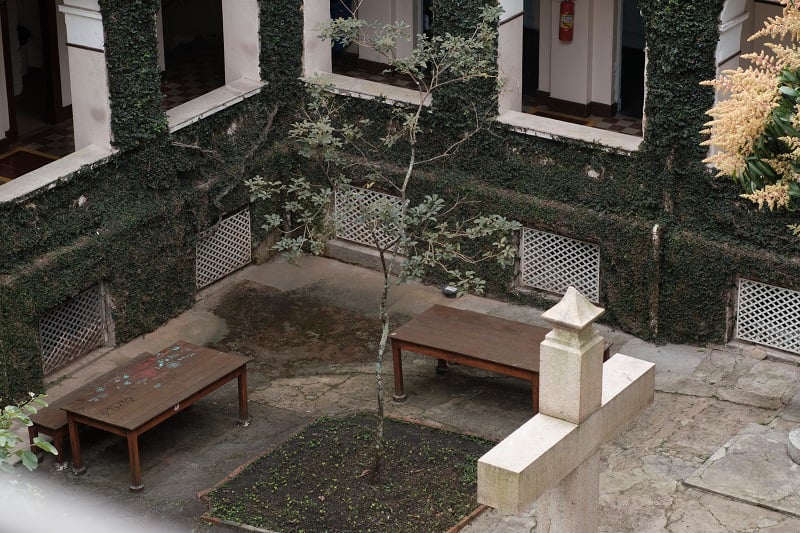
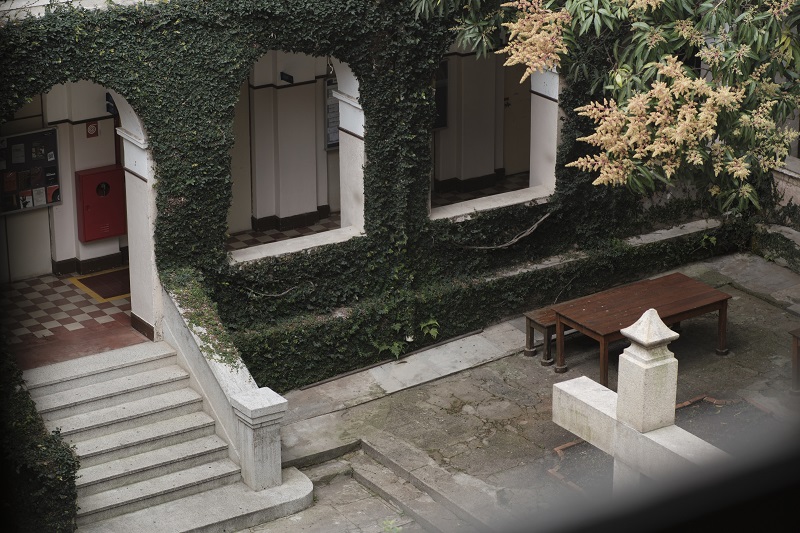
The center courtyard is indicative of the retro style the entire campus embodies—deep, muted colors, dense foliage, and old stone, plaster, and concrete. This older building used to be a convent for priests and nuns before it was converted into a university, and much of the religious architecture remains intact. The courtyard’s main focus directs toward the Cross, with picnic benches providing seats on one side only. This is to promote homage and avoid sitting with your back turned to the centerpiece.
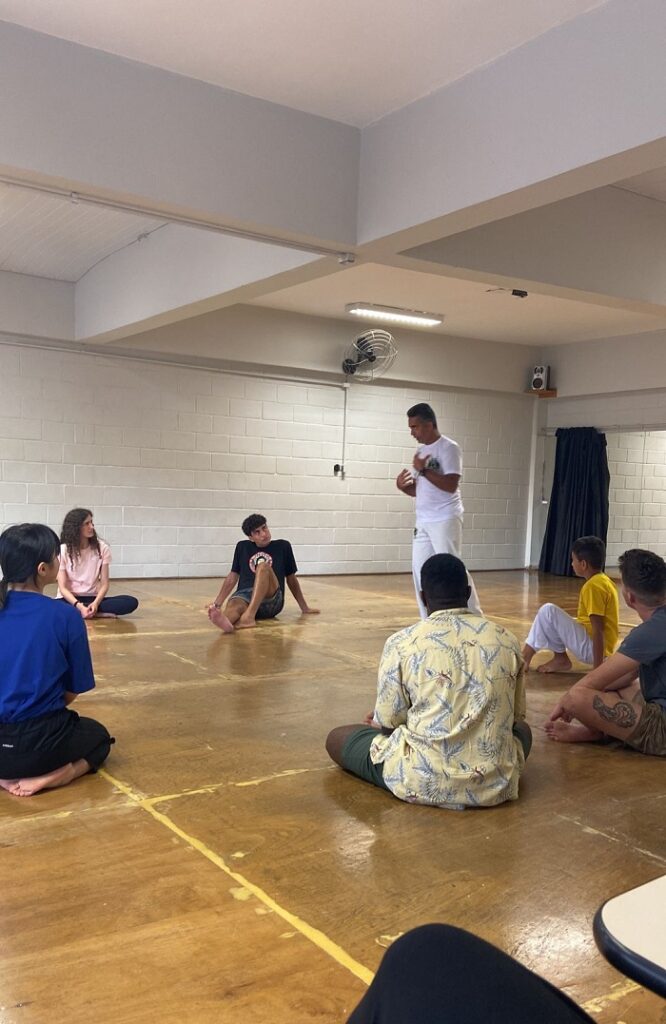
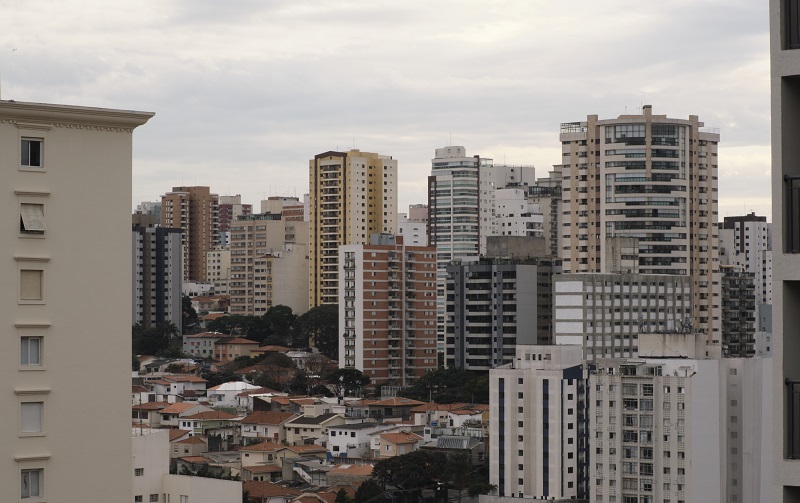
In the afternoon, PUC hosted a capoeira workshop on the top floor of one of its academic buildings. Capoeira is an Afro-Brazilian martial art originating from influences between the enslaved peoples traveling from Africa, Indigenous Brazilians, and Portuguese. It emphasizes the blending of dance, acrobatics, and music. Our teacher constantly reminded us to smile and flow with our movements, as this is more of an art form than a combat sport. After the workshop, we snacked on classic Brazilian foods, like pão de queijo (cheese bread balls) and açaí, and watched the sunset from the rooftop.
July 30
On Sunday, half of our group learned how to catch the bus to Avenida Paulista, which used to be the famous financial district in the city. Before the start of each week, the entire avenue is blocked off to cars. Music, food carts, and merchants filled the streets for an all-day city park gathering.
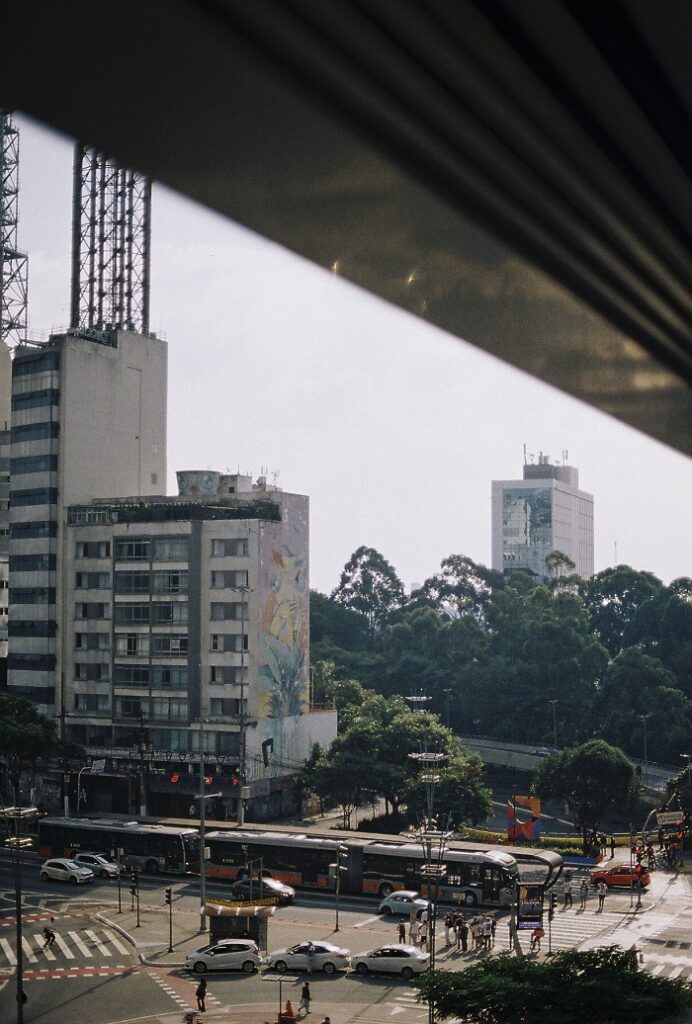
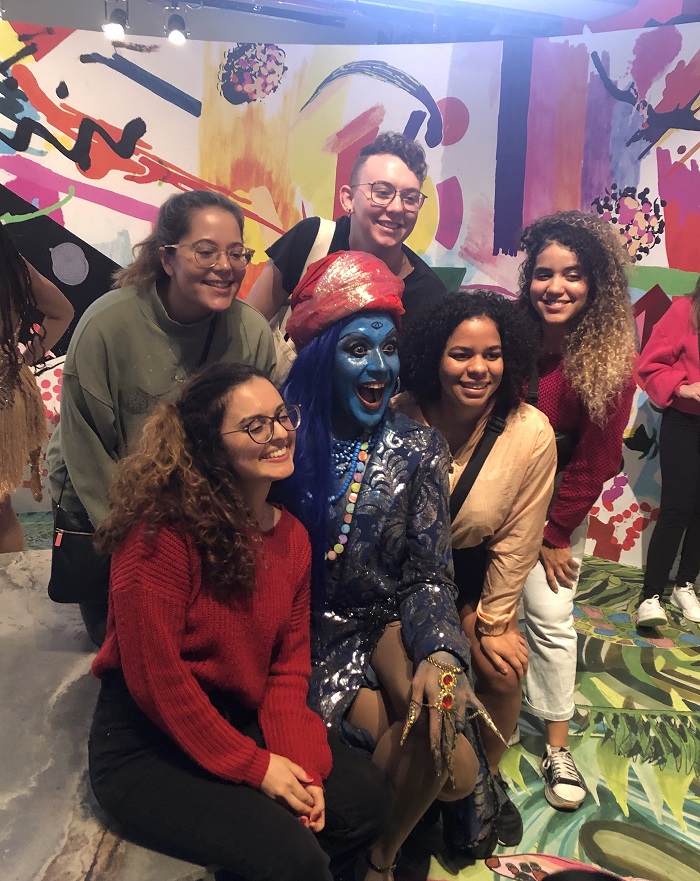
We stopped at SESC, a culture center that hosts contemporary art exhibitions on several floors and a rooftop bar overlooking the avenue. AVAF (Assume Vivid Astro Focus) is an artist collective that embraces conceptual experimentation and queer resilience. Most of its members are from Brazil and France, and on this day, the installation included an interactive performance exhibit.
July 31
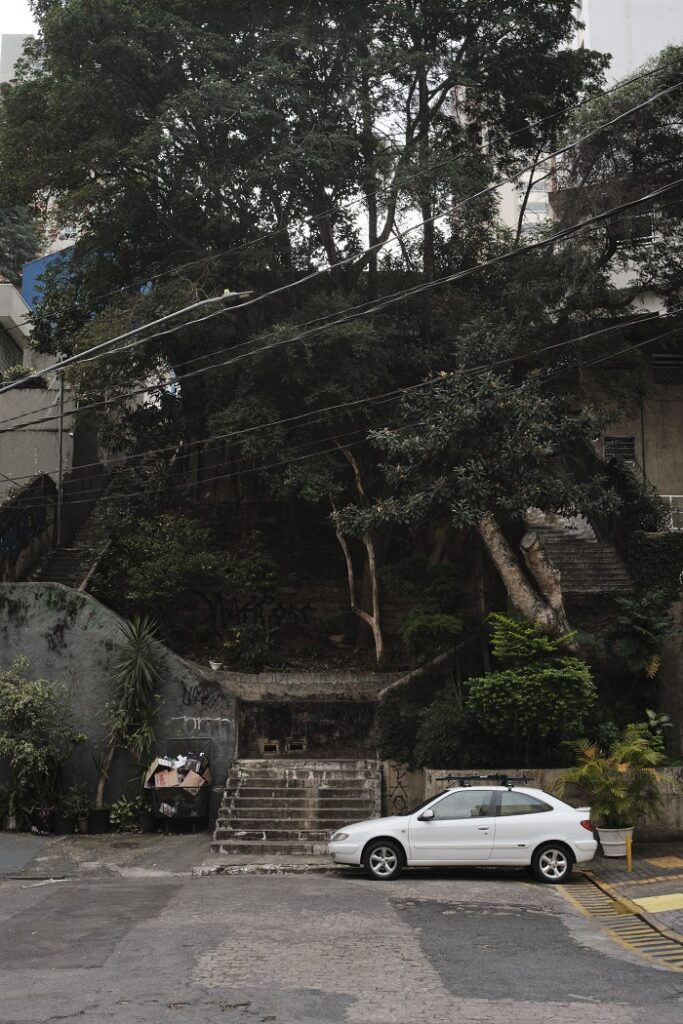
On Monday, we had to walk back to PUC for our direct enrollment orientation with the international student coordinator. Two students I share an apartment building with went with me, and we tried to take the more straightforward route but ended up face-to-face with hills as intense as San Francisco. In the photo above, we had to climb straight upward several stories, getting our exercise for the day. It was well worth it because the trees and morning air made for a very beautiful scene.
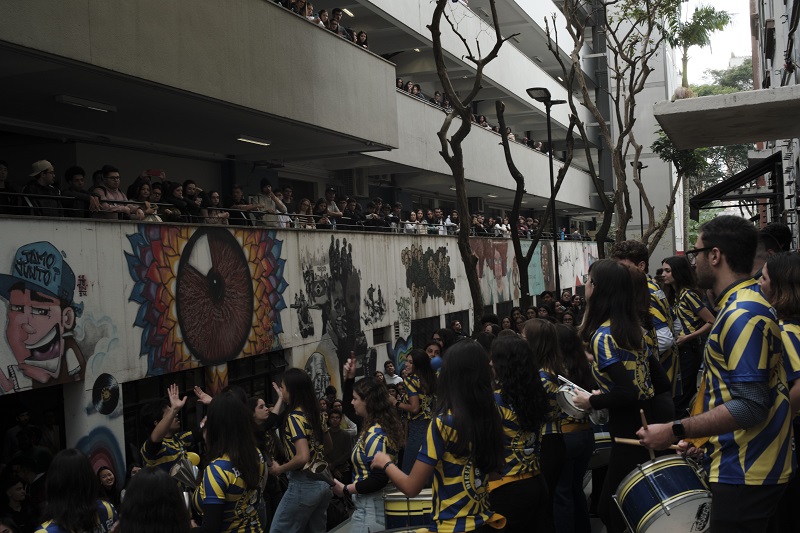
We could already hear the drums and people chanting when we got to campus.
At the start of classes, there’s a tradition called “trote” for entry-level students, which may include raising money for charity and donation of materials like food or blood. Students gather in the courtyard called the prainha (small beach), where they can watch music performances by the different major departments. This drum show is called the bateria (battery), and there are several hosted throughout the day by the different departments. Older students paint newcomers’ faces with yellow and blue for the university’s colors, and huge banners fall from the balconies.
The same night, a few of us already had our first PUC classes to attend. It’s common for Brazilian universities to host night classes to allow students complete flexibility with their schedules. Many Brazilians work full-time internships during the day and can only study at night. These can last up to four hours!
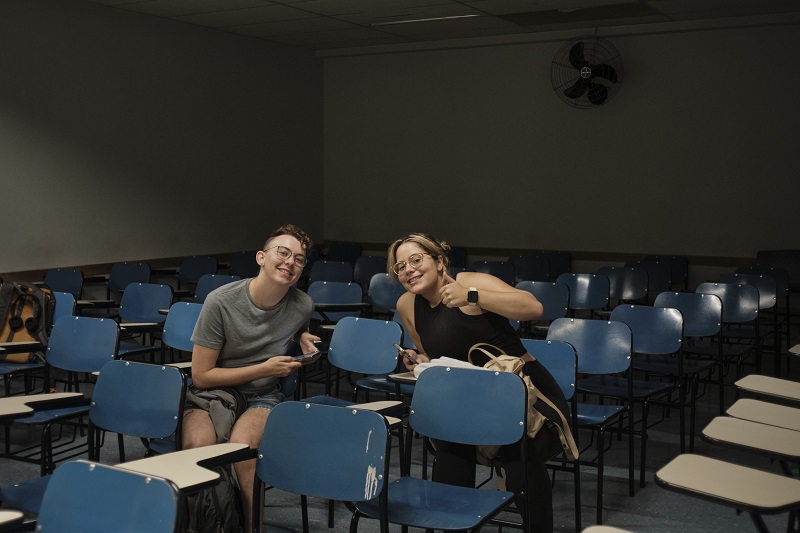
Here’s a photo of one of the classrooms. We accidentally showed up 30 minutes early because the start time on the schedule was misprinted.

It was a vibrant experience seeing how busy the campus was, illuminated by streetlamps and social effervescence. This lively night culture is vastly different from American universities, which are usually quiet—unless there are weekend events or shuffling from those few people who have night classes or electives.